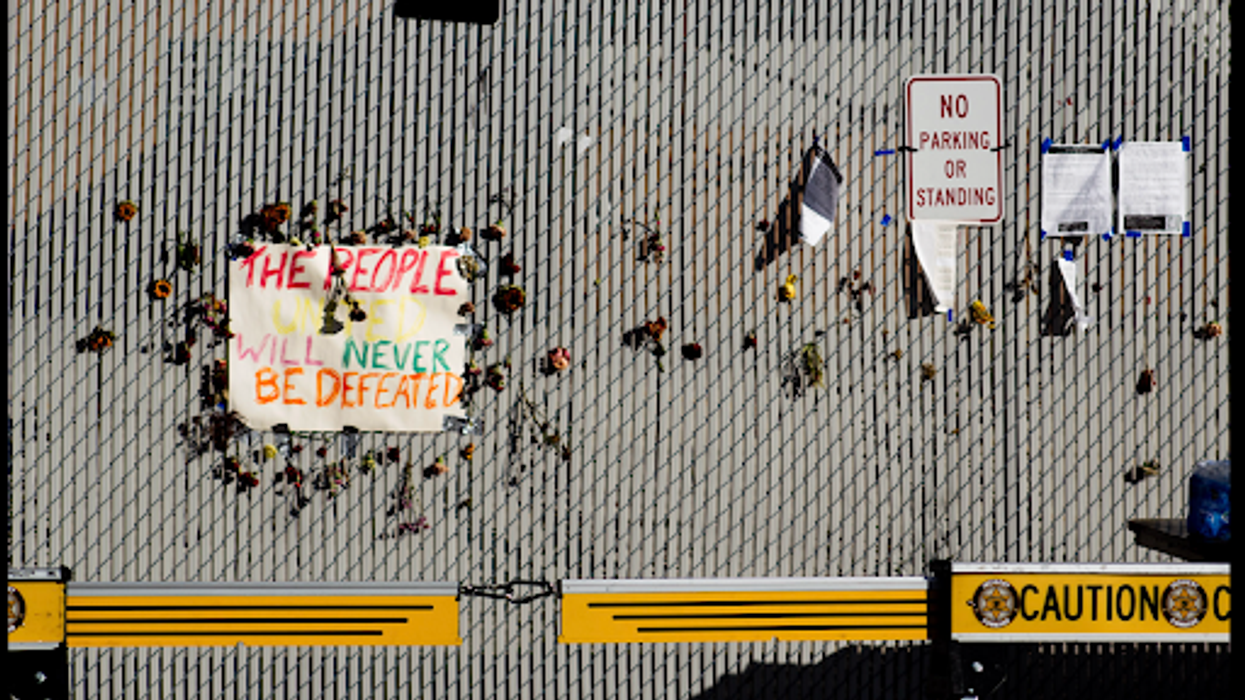Since President Donald Trump took office for his second presidential term in January 2025, detentions of immigrants without criminal records increased more than 10-fold: from 1,048 detainees to 11,972 (an increase of 1,042%), according to public data from Immigration and Customs Enforcement (ICE), the agency in charge of immigration enforcement within the United States
In the same period (January 1 to June 28, 2025), the number of detainees with criminal records rose by 55%, from 9,741 to 15,141.
ICE data also show that fewer arrests are happening at border crossings and more are occurring throughout the rest of the country.
The increase in arrests of people without a criminal record, according to experts consulted by Factchequeado, is due to changes in immigration policies and measures taken by the Republican administration.
Puedes leer esta nota en español haciendo clic aquí.
Lauren DesRosiers, professor and director of the Immigration Law Clinic at the P. Swyer Justice Center at Albany Law School, told Factchequeadothat the arrests increased because the Trump administration rescinded immigration enforcement priorities implemented under President Joe Biden, a democrat. The Biden administration had prioritized arrests of individuals with “certain serious convictions,” DesRosiers said.
Another factor, according to DeRosiers and Florence Otaigbe-Nkwocha, an immigration attorney and member of the American Immigration Lawyers Association (AILA), is the daily arrest “quotas” imposed on ICE agents. As reported by media outlets such as AlJazeera or Reuters, at the end of May 2025, the Trump administration increased the daily arrest quota from 1,000 per day to 3,000 immigrants. California Democratic Congressman Mark Takano also said on June 25, 2025, that the quota “does not force them to focus on felons and violent criminals" during a speech on the House floor in a special session titled "Holding Power Accountable."
Otaigbe-Nkwocha also cited other contributing factors, such as the rescinding of an October 2021 memo that prohibited immigration enforcement actions near or inside protected areas, like schools, hospitals, or religious sites, and the suspension of an April 27, 2021 memo that prohibited immigration enforcement near courthouses.
"Enforcement has increased due to ICE having more access to areas where they can arrest people," Otaigbe-Nkwocha told Factchequeado. "With how easy it is today to arrest in almost any location now, it could be said that this directly correlates to the increase," he added.
What the data say: fewer arrests at border crossings, more in the rest of the country
Since the beginning of Trump's second term, ICE arrests have become less common at border crossings and more frequent in the rest of the country. For example, looking at Customs and Border Protection (CBP) apprehensions data, there were 460 arrests per day in the last quarter of 2024 (October, November and December). That figure dropped to an average of 170 arrests per day (14,264 per month) beginning in January 2025.
In contrast, data on immigrants detained by ICE in the rest of the country (non-border areas) show that the average daily number of arrests rose from 262 people in the last quarter of 2024 to 666 detainees per day as of January 2025, with a peak of 1,011 detainees per day in June (a total of 30,328 were detained in that month, according to data collected by Factchequeado through June 28).
ICE also classifies both ICE and CBP arrests into three categories based on the detainees’ criminal history.
These are the official ICE definitions:
- Convicted criminal: people who have violated immigration laws and who already had a criminal conviction when they were detained by ICE.
- Pending criminal charges: people who have violated immigration laws and had unresolved criminal charges at the time they were detained by ICE.
- Other immigration violator: people who have violated immigration laws, but had no criminal convictions or pending criminal charges at the time they were detained by ICE.
Among all immigrants detained by ICE, those classified as "other immigration violators," i.e., those with no criminal history, rose from 7% (1,048) in January 2025 to 29% (11,972) in June 2025. Meanwhile, those arrested under the "pending criminal charges" category accounted for 31% (4,747) in January and rose to 33% (13,560) by June 2025.
In contrast, the percentage of detainees classified as "convicted of a crime" dropped from 63% (9,741) to 37% (15,141) of the total number of arrestees over the same period.
John Sandweg, former acting director of ICE during Barack Obama's presidency, told ABC News, " for the last probably 15 years at least, the majority of ICE arrests, people booked into ICE custody or ICE apprehensions, were individuals apprehended at the border."
"The problem is that you are now engaged in operations that are, frankly, more likely to find non-criminals than criminals," Sandweg added in the ABC article, which also found in ICE data that the current administration is increasingly arresting immigrants without criminal records.
An analysis by the Cato Institute, a nonpartisan, independent public policy research organization that "promotes libertarian ideas", of non-public ICE data found that 65% of those detained between October 1, 2024, and June 14, 2025, had no criminal record, and more than 93% have never been convicted of violent crimes.
84% of ICE detainees are considered "non-threat level" individuals
The data also shows the criminal history of immigrants held in ICE detention centers.
The agency classifies detainees into four categories::
- ICE Threat Level 1: Includes aggravated felonies, violence, major drugs, terrorism or threats to national security. These individuals are ICE's highest priority.
- ICE Threat Level 2: Includes crimes not as serious as Level 1, but still significant (fraud, weapons, multiple misdemeanors). They are a medium-high priority.
- ICE Threat Level 3: Includes individuals with one or two non-violent misdemeanors. Low priority for ICE, although may be subject to action.
- No ICE Threat Level: Individuals with no criminal convictions. Generally undocumented migrants with no criminal history. Low priority under current policy, but still subject to deportation depending on political or legal context.
According to data collected as of June 23, 84% (39,722 individuals) of immigrants held in detention centers were classified under the "No ICE Threat Level" category. Threat Level 1 accounted for 7% (3,371 people); Level 2 for 4% (1,801); and Level 3 for 5% (2,338). The majority of detainees in all categories are held in detention centers in Texas, Louisiana, Arizona, California, and Georgia.
The percentages of each group has remained relatively the same since fiscal year (FY) 2022. However, between 2019 and 2021 (during part of the previous Trump administration) immigrants with no criminal history accounted for about 62%, while those at ICE Threat Level 1 made up 17%.
Jacqueline Watson, an immigration attorney and second national vice president of AILA, told Factchequeado that the data show that most immigrants in ICE detention centers have no criminal history "because immigrants commit fewer crimes than the native-born population," contrary to what is repeated on social media. In this Factchequeadoarticle, we explained that there is no data showing a "crime wave" caused by immigrants, and in this article, we explained that immigrants have lower incarceration rates than U.S.-born individuals.
Graphic: Ignacio Ferreiro.
Data also shows that FY 2025 has already surpassed the number of detainees in detention centers in FY 2019 (46,304). As of June 23, 2025, there were 47,232 individuals in detention centers and there are still three months left in the fiscal year (which runs from October 1, 2024, to September 30, 2025).
Data on immigrants in detention centers do not include certain facilities classified as:
- HOLD, which are temporary detention centers;
- HOSPITAL;
- HOTEL;
- ORR, an acronym for the Office of Refugee Resettlement which oversees unaccompanied minors;
- MIRP, an acronym for the Mexican Interior Repatriation Program.
Arrests of Immigrants With No Criminal Record up More Than 1,000%, While Criminal Arrests Rise 55%: The Change at ICE Under Trump Administration was originally published by Factchequeado and is republished with permission.



















 Protest signs and resource information posters were hung up around a resource tent in Broadview, Illinois. Credit: Britton Struthers-Lugo, Oct. 30, 2025.
Protest signs and resource information posters were hung up around a resource tent in Broadview, Illinois. Credit: Britton Struthers-Lugo, Oct. 30, 2025. Rubber bullet wounds on Bryan’s back, after a day of protesting at the Broadview ICE facility in mid-September. He wears hospital scrubs, acquired after receiving medical attention following the pepper-spray incident earlier in the day. He returned to protest after being discharged from the hospital.Credit: Adriano Kalin (@adriano_kalin).
Rubber bullet wounds on Bryan’s back, after a day of protesting at the Broadview ICE facility in mid-September. He wears hospital scrubs, acquired after receiving medical attention following the pepper-spray incident earlier in the day. He returned to protest after being discharged from the hospital.Credit: Adriano Kalin (@adriano_kalin). ICE officers gathered outside the Broadview detention center. Yellow identifying badges can be seen on the front of their uniforms and on their shoulders. Credit: Britton Struthers-Lugo, Oct. 30, 2025.
ICE officers gathered outside the Broadview detention center. Yellow identifying badges can be seen on the front of their uniforms and on their shoulders. Credit: Britton Struthers-Lugo, Oct. 30, 2025. Screengrab from the Chicago Council of Lawyers. Designed by
Screengrab from the Chicago Council of Lawyers. Designed by  A white bus waits outside the Broadview Detention Center to transport detainees to a permanent detention center or to an airport. The Broadview Detention Center cannot hold detainees for longer than 12 hours, though to reflect increased enforcement operations this has been increased to 72 hours. Longer stays have been recorded since Operation Midway Blitz. Credit: By Britton Struthers-Lugo, Oct. 30, 2025.
A white bus waits outside the Broadview Detention Center to transport detainees to a permanent detention center or to an airport. The Broadview Detention Center cannot hold detainees for longer than 12 hours, though to reflect increased enforcement operations this has been increased to 72 hours. Longer stays have been recorded since Operation Midway Blitz. Credit: By Britton Struthers-Lugo, Oct. 30, 2025. A paper outlining resources and ways to report federal law enforcement activity around Chicago hangs on a gate in the protestor “free speech zone”.Credit: Britton Struthers-Lugo. Oct. 30, 2025.
A paper outlining resources and ways to report federal law enforcement activity around Chicago hangs on a gate in the protestor “free speech zone”.Credit: Britton Struthers-Lugo. Oct. 30, 2025.